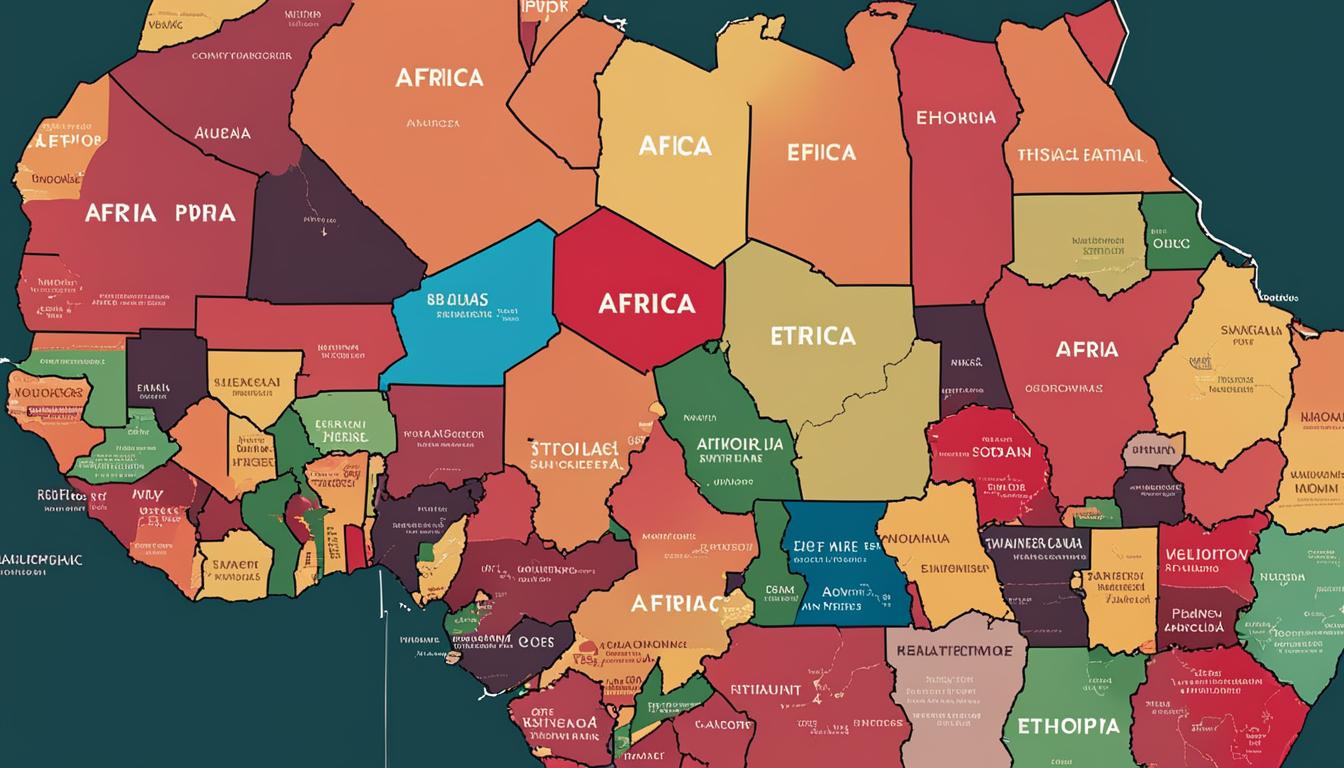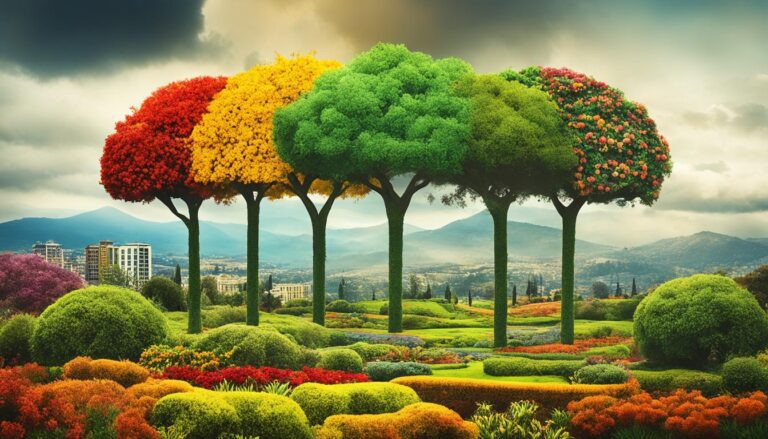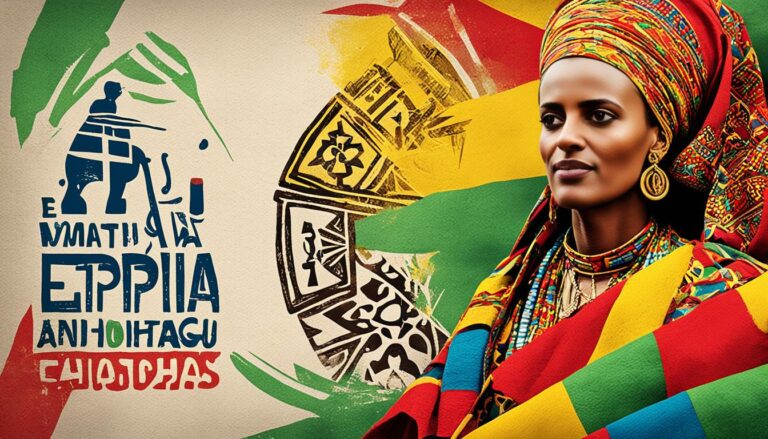Is Ethiopia in Africa?
Did you know that Ethiopia, a country steeped in history and culture, is located in the northeastern part of Africa? This African nation, covering a vast land area of 1,112,000 square kilometers (429,000 square miles), holds a population of approximately 128 million people, making it the second-most populous country on the continent. Situated in the region known as the Horn of Africa, Ethiopia shares borders with several countries, including Eritrea, Djibouti, Somalia, Kenya, South Sudan, and Sudan.
With its fascinating geography, rich ancient history, diverse cultures, and religious traditions, Ethiopia holds a significant place within the African continent. Let’s delve deeper into Ethiopia’s location, heritage, and cultural diversity, uncovering the many treasures this remarkable country has to offer.
Key Takeaways:
- Ethiopia is located in the northeastern part of Africa, in a region called the Horn of Africa.
- It shares borders with Eritrea, Djibouti, Somalia, Kenya, South Sudan, and Sudan.
- With a land area of 1,112,000 square kilometers, Ethiopia is the second-most populous country in Africa.
- It has a rich and ancient history that dates back over 3,000 years, with ancient civilizations like the Kingdom of D’mt and the Kingdom of Aksum.
- Ethiopia boasts diverse ethnic groups and cultures, with over 80 ethnic groups contributing to its vibrant tapestry of traditions and customs.
Ethiopia’s Geography and Topography
Ethiopia’s geography is a tapestry of diverse landscapes and topography that showcases the beauty of the African continent. One of the prominent features of Ethiopia’s geography is the Abyssinian Highlands, a majestic mountain range that stretches from the north to the center of the country. These highlands are home to several peaks that rise over 4,000 meters in height, with Ras Dashen being the highest at 4,543 meters (14,538 feet).
But Ethiopia’s geography is not limited to its towering highlands. The country is also marked by the Great Rift Valley, a geological marvel that extends from the north to the south. This vast rift, which stretches for more than 6,000 kilometers, is known for its magnificent rift valley lakes that add to the scenic beauty of Ethiopia. Some of the notable rift valley lakes include Lake Tana, the largest lake in Ethiopia and the source of the Blue Nile, and Lake Abijatta-Shalla, a unique saline lake known for its rich birdlife.
From the picturesque highlands to the breathtaking rift valley lakes, Ethiopia’s geography offers a diverse range of natural wonders. The country’s topography is a harmonious blend of high mountains, plateaus, vast lowlands, and savannahs. These varied landscapes contribute to Ethiopia’s unique ecosystem and provide a habitat for diverse flora and fauna.
Ethiopia’s History and Civilization
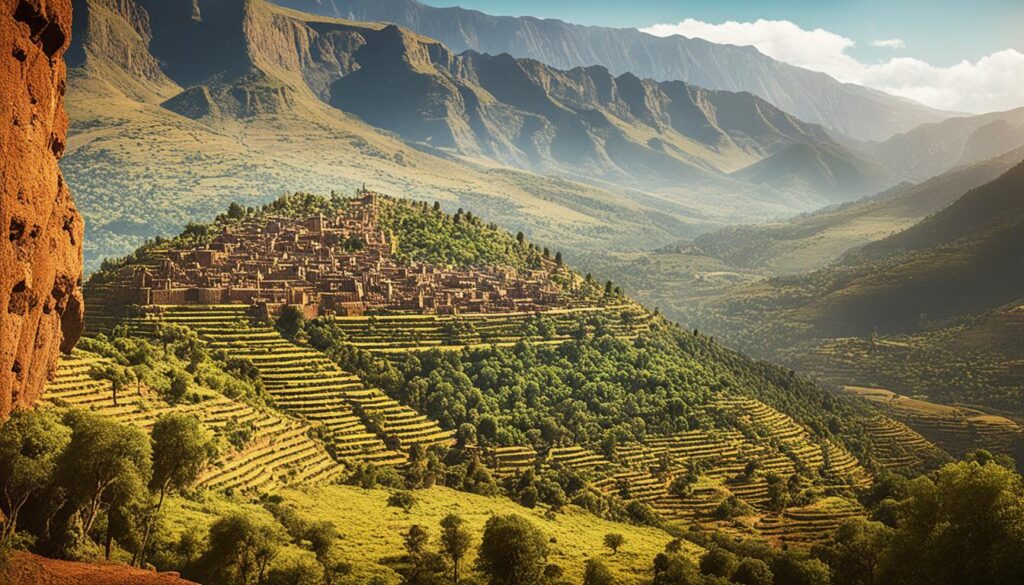
Ethiopia is a land rich in history, boasting a civilization that spans over 3,000 years. It holds the distinction of being one of the oldest independent countries in Africa. The roots of Ethiopia’s history can be traced back to the early humans who inhabited the region, making it the birthplace of Homo sapiens.
Ancient civilizations flourished in Ethiopia, leaving behind a legacy that still resonates today. Two prominent kingdoms, the Kingdom of D’mt and the Kingdom of Aksum, thrived in the region. The Kingdom of Aksum embraced Christianity in the 4th century, establishing Ethiopia as one of the earliest Christian nations in the world.
The Kingdom of Aksum, with its magnificent obelisks and grand architecture, flourished as a major trading power and a center of commerce. It became renowned for its advanced civilization and impressive feats of engineering.
The Ethiopian Empire, with its Solomonic dynasty tracing its lineage to King Solomon and the Queen of Sheba, reigned over the region for centuries. However, the empire faced numerous challenges, including foreign invasions and internal conflicts.
The late 19th and early 20th centuries marked a turning point in Ethiopian history. In 1896, Ethiopia achieved a significant victory over colonial Italy in the Battle of Adwa, solidifying its independence and serving as an inspiration to other African nations. The defeat of colonial powers paved the way for modern Ethiopia’s emergence, as efforts for independence and self-governance gained momentum.
Today, Ethiopia stands as a testament to its remarkable history and the resilience of its people. The country’s rich past is showcased through its ancient sites, historical artifacts, and cultural traditions that have been passed down through generations.
Ancient Civilizations of Ethiopia
The Kingdom of D’mt and the Kingdom of Aksum were two renowned ancient civilizations that left a lasting impact on Ethiopia’s history.
| Kingdom of D’mt | Kingdom of Aksum |
|---|---|
| Flourished from the 10th century BCE until the 4th century BCE | Flourished from the 1st century CE to the 8th century CE |
| Located in present-day northern Ethiopia and Eritrea | Centered around present-day Aksum, Ethiopia |
| Known for its advanced agriculture, trade networks, and impressive buildings and monuments | Famous for its thriving trade routes, impressive architecture (including the obelisks), and early adoption of Christianity |
| Used the Ge’ez script, an ancient script that was the precursor to the modern Amharic language | Developed the Ge’ez script further and used it as the official writing system |
| Contributed to the development of Ethiopian culture and laid the foundation for future civilizations | Established Ethiopia as a major empire, influencing the surrounding regions and leaving an enduring impact on Ethiopian identity |
The ancient civilizations of Ethiopia played a pivotal role in shaping the country’s cultural heritage and influencing its development. Today, the remnants of these civilizations serve as a testament to Ethiopia’s glorious past, captivating visitors and researchers alike.
Ethiopia’s Cultural Diversity
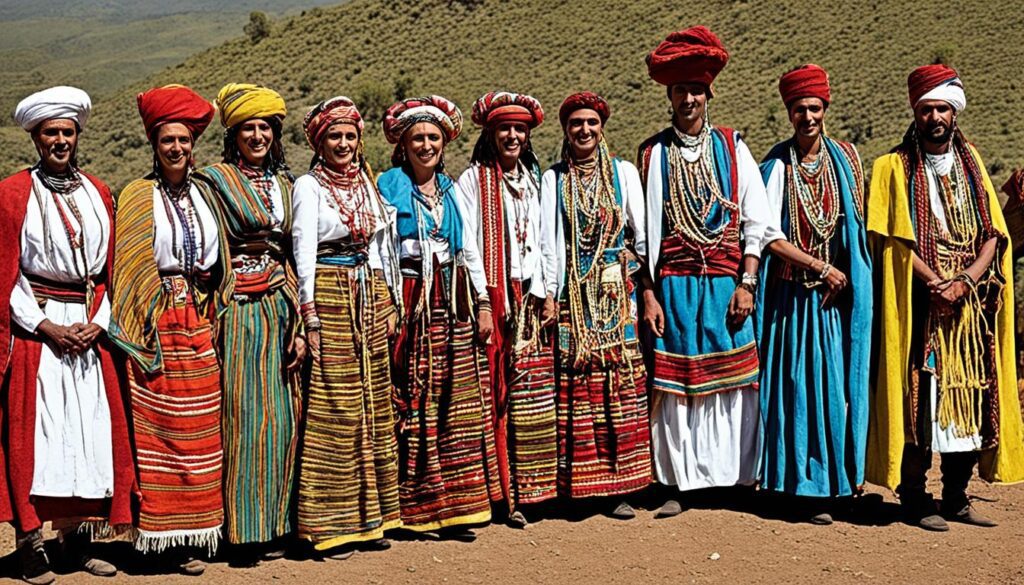
Ethiopia is a country renowned for its vibrant and diverse cultures, encompassing a wide range of ethnic groups. With over 80 distinct ethnicities, Ethiopia is a melting pot of traditions, languages, and customs, making it a fascinating destination for cultural exploration.
“Ethiopia’s cultural richness lies in the diversity of its people, each with their own unique heritage and way of life. From the ancient Amhara civilization to the vibrant Oromo community, Ethiopia’s cultural tapestry is a testament to its long history and complex identity.”
The largest ethnic groups in Ethiopia include the Oromo and Amhara, together comprising approximately 60% of the population. The Oromo people are known for their rich oral tradition, lively music, and intricate beadwork. The Amhara, on the other hand, have a long history dating back to the ancient Aksumite Empire and are renowned for their literature, visual arts, and religious practices.
Other significant ethnic groups in Ethiopia include the Somali, Tigrayan, and Sidama. The Somali people, predominantly residing in eastern Ethiopia, have a distinct nomadic heritage and are known for their vibrant dance forms and intricately woven textiles. The Tigrayan community, hailing from the northern highlands, has a rich ancient history and is celebrated for its vibrant festivals and strong cultural preservation. Lastly, the Sidama people, residing in the southern part of the country, have a diverse culture rooted in agriculture and are famous for their unique coffee ceremonies.
Ethiopian culture is further enriched by its captivating music, dance, and traditional festivals. The sounds of traditional instruments such as the masinko and krar fill the air during festivities, and the soul-stirring dance performances showcase the country’s rich cultural heritage. Festivals like Timkat, a celebration of the Epiphany, and Meskel, commemorating the finding of the True Cross, are colorful spectacles that bring communities together in joyous revelry.
Ethiopian cuisine is also an integral part of the country’s cultural identity. Traditional dishes such as injera, a sourdough flatbread, and doro wat, a spicy chicken stew, tantalize the taste buds with their unique flavors and aromas. Ethiopian cuisine is steeped in tradition and brings people together through communal dining experiences, reinforcing the unity and shared values of the diverse Ethiopian society.
Overall, Ethiopia’s cultural diversity is a reflection of its long and complex history, with each ethnic group contributing to the vibrant mosaic that is Ethiopian culture. Exploring the various traditions, languages, and customs is an enriching journey that unveils the beauty and depth of Ethiopia’s cultural heritage.
| Ethnic Group | Key Features |
|---|---|
| Oromo | Rich oral tradition, lively music, intricate beadwork |
| Amhara | Literature, visual arts, religious practices |
| Somali | Nomadic heritage, vibrant dance forms, intricately woven textiles |
| Tigrayan | Ancient history, vibrant festivals, cultural preservation |
| Sidama | Agricultural traditions, unique coffee ceremonies |
Religion and Beliefs in Ethiopia
Religion plays a significant role in Ethiopian society, with a mix of different faiths and beliefs contributing to the rich cultural heritage of the country. The majority of Ethiopians adhere to Christianity, and the Ethiopian Orthodox Tewahedo Church is the largest Christian denomination in the country.
Christianity has deep roots in Ethiopia, with the Kingdom of Aksum becoming one of the earliest Christian nations in the world during the 4th century. Ethiopian Orthodoxy follows its own distinct traditions and practices, making it a unique branch of Christianity.
Islam is also widely practiced in Ethiopia, especially in regions with a significant Muslim population. Ethiopian Muslims follow the Sunni tradition of Islam and contribute to the religious diversity of the country.
Additionally, traditional faiths and indigenous religious practices are still prevalent in Ethiopia, highlighting the cultural diversity of the population. These traditional beliefs are often intertwined with Christianity or Islam, combining ancient customs and rituals with elements of monotheistic religions.
“Ethiopia is a microcosm of religious diversity, where Christians, Muslims, and followers of traditional faiths coexist and respect one another’s beliefs, fostering a sense of cultural harmony.”
Ethiopia is known for its vibrant religious festivals and celebrations, such as Timkat (Epiphany) and Fasika (Easter). These events bring communities together in joyful commemoration and reflection, showcasing the deep spiritual connections that people have with their faiths.
The religious and cultural tolerance within Ethiopian society is a testament to the country’s values of unity and respect. This acceptance of different religious beliefs creates a unique tapestry of faith, enriching the social fabric of Ethiopia.
Religious Diversity in Ethiopia
Here is a breakdown of the religious composition in Ethiopia:
| Religion | Percentage of Population |
|---|---|
| Christianity (Ethiopian Orthodoxy) | 43% |
| Islam | 34% |
| Traditional Faiths | 18% |
| Other Religions | 5% |
The diverse religious landscape of Ethiopia reflects the country’s rich history and cultural values, making it a captivating destination for those interested in exploring the intersection of faith and tradition.
Conclusion
In conclusion, Ethiopia is a fascinating African country with a diverse culture, rich history, and breathtaking landscapes. Situated in the Horn of Africa, Ethiopia occupies a strategic location in the continent. Its geography encompasses a wide range of terrains, from towering mountains to expansive lowlands, offering visitors and residents alike stunning natural beauty.
Throughout its long and storied history, Ethiopia has been home to ancient civilizations and has seen the influence of Christianity. The country’s resilience in the face of colonization and its lasting cultural heritage are testaments to its remarkable past. The presence of numerous ethnic groups, each with its own unique traditions and language, highlights Ethiopia’s rich cultural tapestry.
Overall, Ethiopia is a captivating African nation that showcases a combination of historical significance, diverse cultures, and breathtaking landscapes. It is a destination that offers something for everyone, from history enthusiasts seeking ancient artifacts and landmarks to nature lovers yearning to explore its diverse geography. Both residents and visitors can immerse themselves in the vibrant traditions and customs of Ethiopia’s diverse ethnic groups, further enhancing the experience of this remarkable African country.

